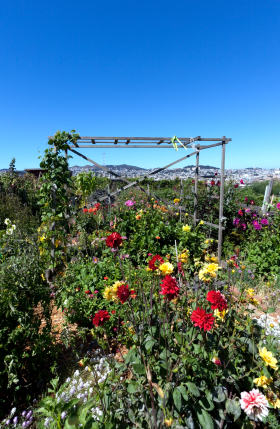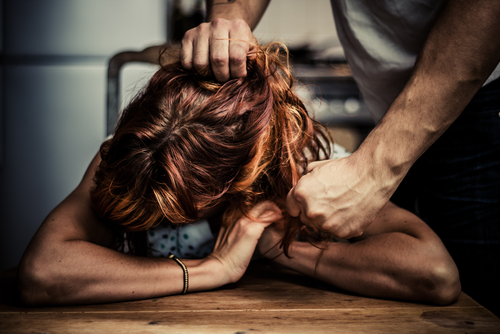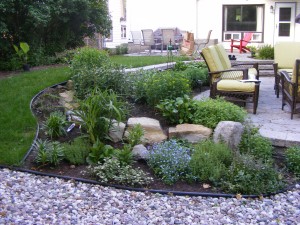Resilience, illness and community
 This week I called on your help. And you answered by sharing Wednesday’s Team Brilliant post, joining the community, sharing via Facebook and Twitter, donating and buying tee shirts. I am honoured and wowed. Which is why I want to this little gem with you: when you are ill, your resilience appears to highly related to social support, along with the ability to cope, finding benefit in your experience, however difficult, and perception.
This week I called on your help. And you answered by sharing Wednesday’s Team Brilliant post, joining the community, sharing via Facebook and Twitter, donating and buying tee shirts. I am honoured and wowed. Which is why I want to this little gem with you: when you are ill, your resilience appears to highly related to social support, along with the ability to cope, finding benefit in your experience, however difficult, and perception.
So, what is meant by ‘resilience?’
Across the literature and across different illnesses, resilience in the form of adversity refers to one’s capacity to successfully maintain or regain one’s mental health and attitude. It relates to hope, empowerment, acceptance of hardship and determination. Anticipating and envisioning a ‘healthy self’ in the future can help us see past current and immediate physical or illness hardships.
Social support from family and friends also plays an essential role. Social support has been associated with better psychological health, finding benefit in one’s situation, hardiness and self-esteem. Moreover, studies show that social support actually boosts success in living with an illness.
Over the past several weeks, we have seen that in action, as a community of people, many with only two people in common, joined together to help and support someone with a critical illness in need. When I asked that person how that effort impacted his outlook, he told me that he looked forward to the future when he could pay it forward.
Social support is powerful. According to a recent review in Psychosomatics Journal, “social support is clearly vital to most patients to enhance resilience.” The researchers say that factors that further enhance this support include active coping, positively assessing one’s situation, acceptance, and spirituality. Ultimately, these factors in concert can help many individuals with illness form a new framework, identify new and positive inner strength that they never realized they were capable of and even improve overall functioning.
Goethe once wrote “The world is so empty if one thinks only of mountains, rivers & cities; but to know someone who thinks & feels with us, & who, though distant, is close to us in spirit, this makes the earth for us an inhabited garden.”
Whose garden will you inhabit?
p.s. Julie Pippert. I have a tee shirt for you.
Read More
Guyside: a sad and beautiful world.
From my perch in Canada, the decision in Ferguson felt like a tragedy, or perhaps a series of tragedies.
First and foremost among those tragedies is the death of a young man. In a better world, Michael Brown would still be alive.
Next among the tragedies of this case is the loss of yet more faith in the US court system by the African-American community. If people can’t feel that their judicial system will treat them fairly, then eventually some will find extrajudicial means to mete out justice as they see fit. For us, in the relatively wealthy parts of the Western world, that is a tragedy.
Our world and the culture of violence against women and girls
We live in in a world, where efforts to prevent violence against women and girls is inadequate, according to a five-part series published today in The Lancet journal. The statistics are startling:
- Almost a third of women worldwide have experienced either physical or sexual partner violence
- 7% have experienced sexual non-partner violence
- Nearly 70% of girls are married before the age of 18, many against their will
- Up to 140 million women worldwide have undergone female genital mutilation
Here in the U.S., the culture of violence has extended to the internet, where it is seemingly acceptable for men to threaten and coerce women who disagree with them or who try to enter the Men’s Club. If you’ve not heard about #Gamergate or #Celebgate, (or #Ubergate, for that matter) I urge you to dig deeper at challenges pervading wealthier, Western nations. And that’s likely the tip; consider the Cosby debacle or growing reports of sexual assaults on college campuses. Just look at this latest piece on the culture of rape at University of Virginia; the implications are horrible and the code of silence, widespread and misdirected. As the Lancet authors point out, “rape is often a matter of stigma for the victim; violence in the home has been considered a private affair. Turning of the head and closing of eyes have occurred despite [the evidence].”
The Lancet Series suggests that while global attention to violence against women and girls has increased, not enough is being done to prevent the violence from occurring in the first place. Moreover, rigorous data on interventions that work on the prevention front — even in high-income countries — are scarce. Still, the little evidence they have gathered suggest that a multi-pronged strategy is most effective, one that “holistically addresses the individual, interpersonal, community and societal drivers of violence. A key place to start? Correcting gender-power imbalances.
The Series authors write that “women’s and girls’ vulnerability to violence is deeply rooted in the greater power and value that societies afford men and boys in access to material, symbolic and relational resources compared to women.” Moreover, “this gender-based risk is often compounded by other forms of discrimination and inequality based on, for example, race, class, ethnicity, caste, religion, disability, HIV status, migration status, sexual orientation and gender identity, which affect both exposure to violence and the experiences of response.”
Mind you, there has been great strides on the societal level with regard to efforts to change legal and policy norms and recognize this type of gender-driven violence as human rights violation. However, as the authors aptly point out, laws and policies may provide the framework for the unacceptability of violence against women and girls but they are insufficient.
A strategy that has started to take hold is involving men and boys in efforts to stop violence. It is imperative the societal norms that perpetuate gender inequality and violence be reversed and that the role of men and boys as allies in the work to prevent and end violence against women and girls is elevated. Let me be clear: not all men are violent; men who perpetuate or practice violence against women have themselves, often encountered high levels of violence. The use of violence against women is a source of power accorded to men in many settings; take the tech space, for example. And, if cultural norms dictate that “women fall under men’s control, then physical or sexual force and threat are ways to achieve this.”
Still, investment in violence prevention is inadequate. From an economic standpoint and compared to national public expenditure on sports or election campaigning (both of which are estimated in the $3 to $5B range), the U.N. has only benchmarked $100M for investment into violence programs. Yet, the indirect costs are astronomical; the Series emphasizes that women who are exposed to or the victims of violence make greater use of health services than non-abused women, even years after the violence has ended. Violence against women and girls also affects productivity and contribution to social and economic development; the annual costs of intimate violence partner in Western societies ranges from $5.8B in the US (2003 figure) to £22.9B in England and Wales (2004) and $4-5B in Australia. The study Authors also emphasize that while many governments have developed national plans of action to address violence against women and girls, few had dedicated budget lines and domestic spending to support them, despite evidence that points to a strong economic rationale for such policies (for example, the U.S. could save an estimated $23,673 per woman prevented from experiencing violence).
Aside from government allocation of funding and altering societal norms, an important conclusion of the Series is that the healthcare sector has an important role to play in shifting attitudes. Victims are seen regularly in many different health settings and yet programs are not adequately synergized to affect change. By and large, practitioners are taught that their role is to treat disease and related symptoms and many harbor prejudice against involvement in so-called private matters. The authors also say that there is little rationale for distinguishing between preventive programs directed at smoking, drug abuse and healthy eating versus those that raise awareness about the health burden of violence and the broad acceptance of norms that perpetuate it.
“Violence against women and girls is not just another women’s issue, but is a public health and development problem of concern to all.”
There are many ‘Gates in circulation. Daily, we read about another case of online harassment, another case of rape, another threat, another sign of abuse. Not only do we need to reverse the tide; we need to prevent it.
Read More
Guyside: In the Garden
In my part of the world, spring has finally given us some warm sunny days. It seems as if the plants in my back yard were impatiently waiting to get on with the business of blooming.
And that meant that my partner and I spent some hours over Canada’s Victoria Day weekend tending our little piece of the planet.
When it comes to gardens, I am more inclined to be a passive appreciator. I don’t know much about flowers, but I do like to look at them and smell them. And for the next six months or so, I am lucky enough to be able to take my notebook out to the garden and work in the middle of what we jokingly call “the cottage.”
But I lack the strategic sense when it comes to our garden. Cathy sees what could be, what needs to move, what needs to split. I don’t. And to be honest, digging and weeding and hoisting stuff isn’t of less interest to me. So when it comes to gardening, I’m the brute force and the cheap labour, doing what I’m told by the person with brains.
But even if you’re like me, there are a lot of benefits to be derived by working in the garden. Even some moderate gardening can have similar effects to other forms of exercise, according to Weight Watchers. One implication of that: prepare for gardening the same way as you would for other forms of exercise. Do a little warmup, stretch, and the like. Most important for me is to vary my tasks. Don’t rake for three hour stretches (not that I could rake for that long in my plot anyway); don’t be bent over weeding for hours. Take breaks and change up the task to keep your muscles limber.
There are also psychological and spiritual benefits of working in the garden. The University of Nebraska College of Public Health published a great two-part article outlining the benefits of gardening. Their focus was not only on your own garden space, but on community gardening. If you live near a community garden, you may not only be able to put food on your own table, but to help others who need it to have the freshest, healthiest food that can be imagined. We grow tomatoes every year, and there’s nothing like a fresh tomato plucked right off the vine, or a pasta sauce made with tomatoes and herbs you grew yourself and harvested that very day.
Maybe it just comes down to some very simple truths: it feels good to take responsibility for even a little part of what we eat. It feels good to be in the sun, to watch the rain come down and help your plants grow, to enjoy the harvest. For a white-collar dude like me, it feels good to get your hands dirty from time to time. It’s nice to be the cheap labour and not have to make decisions once in a while!
Spending time in the garden — whether working or enjoying — gives us windows of time when we can simply let go of the other stuff in our lives and just be in the moment. And damn, it’s nice to be lying in the hammock with a beer in reach, and a book open on your chest, idly looking around at your own patch of green.
Read More
Guyside: what the Michael Sam backlash teaches us about us
If it hadn’t been for two men kissing, I doubt I would have taken any notice at all of the NFL draft last week. While there are lots of people in Canada who are big NFL fans, I’m not; frankly, if I’m watching football, I’m watching the Canadian game, with its bigger field, fewer downs, and more freewheeling style. But I’m not here to talk about our superior game.
The big story out of this year’s NFL draft was the selection of Texan Michael Sam by the St. Louis Rams. Or, more precisely, the big story was the video of Sam sharing a celebratory kiss and hug with his boyfriend Vito Cammisano (who, Wikipedia tells me, is also an accomplished athlete.)
Miami Dolphins safety Don Jones tweeted the word “horrible.” Others criticized ESPN for broadcasting the display of affection, saying “kids are watching.” A former Ole Miss basketball player tweeted that he was boycotting ESPN because his 7 and 11-year-old brothers were exposed to the video clip, then after being subject to a large backlash, said that his tweets had been part of a friend’s psychology project.
Suffice it to say that there was a lot of shock and horror that this athlete would engage in a display of same-sex affection on camera, and that it would be broadcast.
My friend Joe wrote about how he talked with his daughter about this, and it got me thinking about us heterosexual guys and our complicated relationship with gayness. When I was a kid, the worst thing that you could call another guy was one of the pejorative terms for “gay:” fruit, faggot, fairy. And certainly in my world of popular culture in the 1970s and 1980s, there were very few examples of gay men. It was known that Elton John was gay. There were rumours about David Bowie. But certainly there were no out gay men in my world, and I never met someone who was out until I went to university in 1983.
Things have changed since then. I now count many GLBT people as both casual and deep friends, and I’m part of one of city’s major events for the GLBTQ community. So what have I learned? First off, none of that has led me towards changing my sexual orientation. I’m as straight as I was in my teens, or even back further than that (if you can have a sexual orientation at that age.)
Second, I can’t imagine a set of circumstances that would turn me from a guy who likes women to a guy who likes other guys. And that lack of imagination has led me to believe that it’s unlikely circumstances exist that would change a woman who loves other women to a woman who loves men, etc. So I can’t get behind the idea that someone (child or adult) seeing two men kiss on television is going to be “twisted,” “scarred,” etc. I also don’t see how it’s difficult to explain that behaviour to a kid — “Those guys? They love each other, so they’re kissing. Some guys love other guys.” Apparently, I’m not the only one.
Third, objecting to something does not mean you get to be insulated from that’s thing’s existence. Nobody has the right to tell you that your opinion on gay men is wrong. But you don’t have a right to never see or be exposed to gay men in your life, and it would be a lot easier for everyone if you can say to yourself and others “The Bible tells me that homosexuality is wrong.”
Finally, we straight guys have to get past the double standard that seems to exist around gay men. I don’t think I need to tell you that there’s a lot of attention paid to women kissing women — and men watching them. But when it comes to men kissing men, there’s what many would say is a visceral reaction of revulsion. I believe that reaction is learned and reinforced by society. (And to be clear, I have no evidence to support that beyond that of my own life.) We are taught to be revolted by it. We then write scripts to justify it, that often involve either direct damage (based on the broadly-debunked belief that homosexuality and pedophilia are related) or psychological damage or scarring (based on the broadly-debunked belief that gayness can be “taught.”)
We need to accept people and things and behaviour at face value. Two guys kiss? Yup, they kissed. No more than that. A guy likes guys? Yup. As men, let’s get past the taunts and the immaturity that we grew up with around this stuff.
Read More







